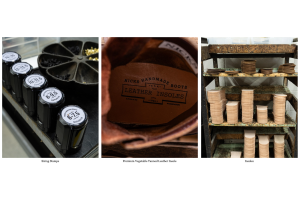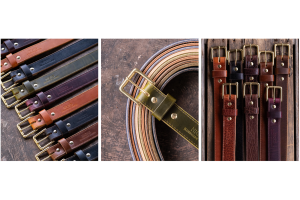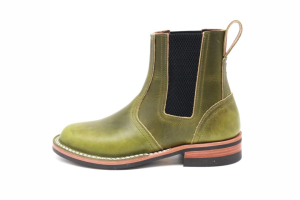What Is A Composite Toe Boot? Safety, Comfort, And Why It Matters On The Job

Key Takeaways:
- Non-Metallic Safety Advantage: Composite toe boots offer non-metallic safety protection, ideal for jobs involving electricity, temperature extremes, or security screenings.
- Lightweight Comfort for Long Shifts: Comfort and weight advantages make them a top choice for long shifts, with added temperature regulation and less fatigue.
- Craftsmanship from Nicks Boots: Nicks Boots delivers handcrafted composite toe options, using full grain leather and durable rubber for unmatched quality and performance.
At Nicks Boots, we don’t just make boots — we craft legacy. For over 60 years, our name has been synonymous with uncompromising quality, American craftsmanship, and work-ready durability. Each pair of boots is built by hand in Spokane, Washington, using full grain leather and time-tested techniques that honor the tradespeople who rely on us every day. When we talk about safety footwear, we speak from decades of experience — not theory.
Composite toe boots are one of the most important innovations in the world of protective workwear. They provide all the impact protection you’d expect from a traditional steel toe, but without the drawbacks — no cold transfer, no conductivity, and no unnecessary weight. For tradespeople, field workers, and anyone spending long days on their feet, that balance of comfort and protection makes all the difference. Yet, despite their growing popularity, composite toe boots are still often misunderstood or overlooked.
In this piece, we’ll explore what composite toe boots are, how they differ from steel toe alternatives, and why they’re often the better choice for those who work hard, move fast, and demand more from their gear.
What Is A Composite Toe Boot?
A composite toe boot is a type of safety footwear designed to protect the toes from impact or compression injuries, just like steel toe boots — but instead of metal, the toe cap is made from non-metal materials such as carbon fiber, Kevlar, plastic, or fiberglass. These materials are engineered to meet the same safety standards as steel, while offering some additional benefits in certain work environments.
Unlike steel toes, composite toes do not conduct electricity, heat, or cold. That makes them ideal for electricians, workers exposed to extreme temperatures, or those needing to pass through metal detectors frequently. Composite toe boots are also often lighter than their steel counterparts, helping reduce fatigue during long hours on the job.
Ultimately, composite toe boots strike a balance between protection, weight, and comfort, making them a popular choice for a wide range of trades.
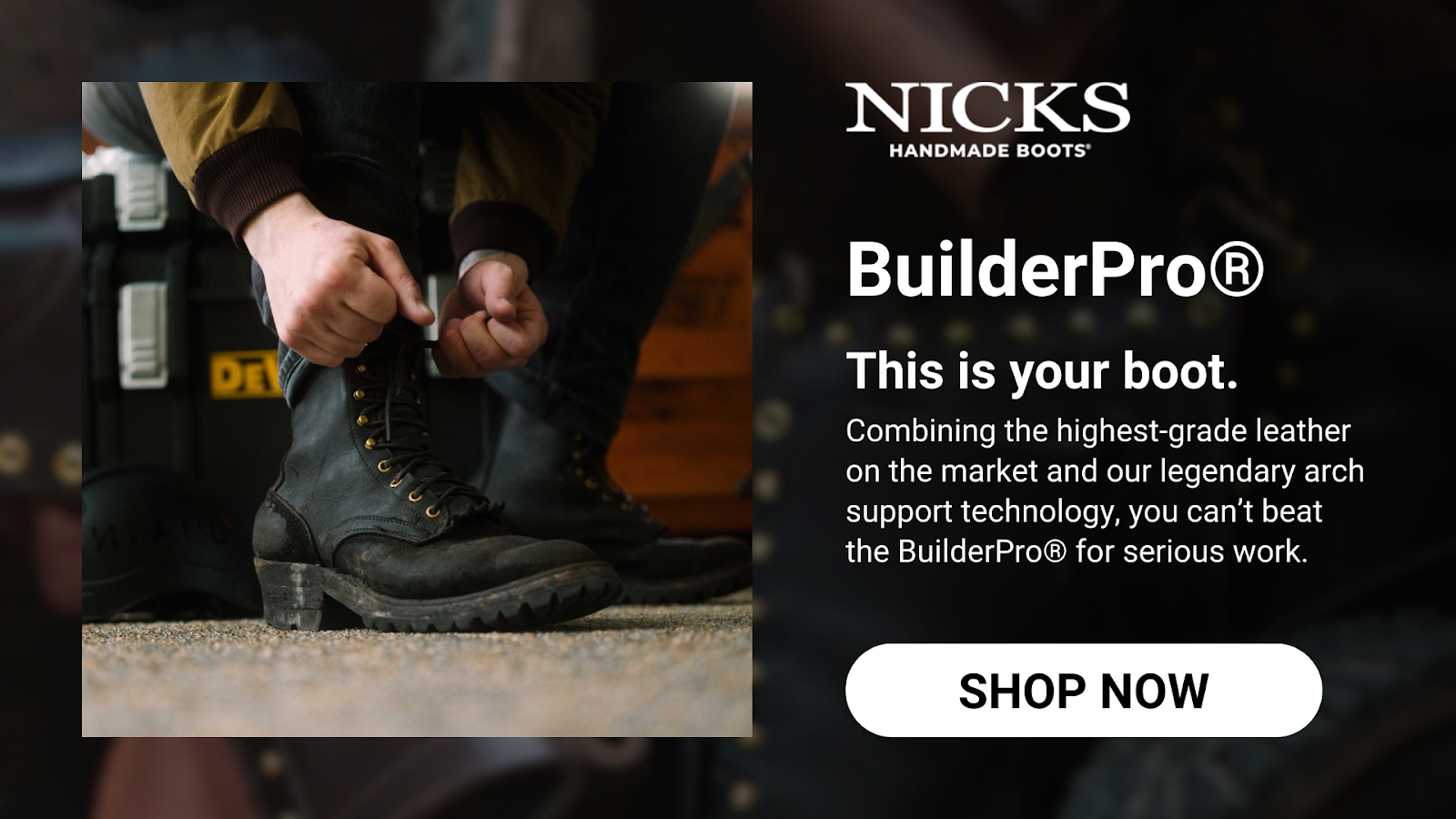

How Composite Toe Boots Differ From Steel Toe Boots
While both composite and steel toe boots serve the same primary purpose — protecting your toes from injury — they differ in a few key ways that can impact comfort, performance, and suitability for specific jobs.
Material Composition
Steel toe boots use a hardened steel cap, whereas composite toe boots rely on non-metal materials like fiberglass or carbon fiber. This makes composite toes non-conductive and more suitable for environments with electrical hazards.
Weight
Composite toe boots are generally lighter than steel toe boots. While the difference might seem minor, it can significantly reduce leg fatigue over a long workday.
Temperature Sensitivity
Steel toe caps can become uncomfortably hot or cold depending on the environment, whereas composite materials tend to be more temperature neutral — which is better for extreme heat or cold conditions.
Detection In Security Scans
Composite toe boots do not trigger metal detectors, making them a smart choice for airport or high-security environments.
Durability And Slimness
Steel toe boots are typically thinner for the same level of protection. Composite toe caps may need to be slightly thicker to meet the same standards, which can affect the look or feel, though high-end craftsmanship can mitigate that.
Key Safety Benefits Of Composite Toe Boots
Composite toe boots are more than just lightweight alternatives to steel — they’re engineered for protection in demanding environments. Here’s why they’re trusted by professionals across industries:
Impact And Compression Resistance
Just like steel toes, composite toe boots meet or exceed ASTM safety standards for protecting against heavy falling objects or compression from equipment and vehicles.
Non-Conductive Materials
Made without metal, composite toe boots do not conduct electricity, making them a safer option for electricians, utility workers, and those working near electrical sources.
No Heat Or Cold Transfer
Composite materials help maintain a neutral internal temperature, which is crucial for people working in extreme climates — whether in freezing cold or intense heat.
Security-Friendly
Since there’s no metal, composite toe boots won’t trigger metal detectors, making them ideal for industries like aviation, logistics, and security.
Durable, All-Day Protection
High-quality composite toe boots, especially when crafted with full grain leather and rugged rubber soles, offer long-lasting protection without sacrificing flexibility or comfort.
Are Composite Toe Boots Comfortable?
Yes — and in many cases, more comfortable than their steel-toed counterparts. Composite toe boots are intentionally designed to reduce fatigue while offering protection, which is critical for anyone who spends long hours on their feet.
Here’s how they support all-day comfort:
- Lighter Weight Means Less Fatigue: Composite materials are significantly lighter than steel. This reduced weight makes a noticeable difference during extended wear, especially for jobs that involve walking, climbing, or standing for long periods.
- Temperature Regulation: Because composite materials don’t conduct heat or cold, your feet stay more comfortable in extreme climates. You won’t get the icy chill of steel in winter or heat build-up in summer.
- Flexible Footbeds and Uppers: When paired with quality construction — like full grain leather uppers and durable rubber soles — composite toe boots offer a balance of support and flexibility that molds with your foot over time.
- Roomier Feel: Composite toe caps sometimes allow for a bit more space inside the toe box, depending on design. This can lead to a more natural foot position and fewer pressure points.
Ultimately, comfort comes down to construction. A well-made boot using premium materials (not synthetic fillers) will always outperform mass-produced alternatives. When built with care, a composite toe boot offers protection and a pleasant daily wear experience.


When To Choose Composite Toe Over Steel Toe
Choosing between composite and steel toe boots depends on your work environment, job requirements, and personal comfort preferences. Here are situations where a composite toe boot is the smarter choice:
Working Around Electricity
Because composite materials are non-conductive, these boots are ideal for electricians, linemen, and technicians who need protection from electrical hazards.
Cold Or Hot Environments
Composite toes won’t conduct heat or cold like steel, making them more comfortable for those working outdoors year-round or in temperature-sensitive areas like freezers or foundries.
Security Checkpoints
If you regularly pass through metal detectors — in airports, government facilities, or logistics hubs — composite toe boots save time and hassle by avoiding unnecessary alerts.
Long Shifts On Your Feet
The lighter weight of composite toes makes them a better fit for people who work long hours, especially those on hard surfaces. Less weight equals less fatigue.
Light-Duty Work With Safety Needs
Even if you're not in heavy construction, many jobs in warehousing, light manufacturing, and landscaping still benefit from toe protection. Composite toes offer safety without the bulk of steel.
Top Composite Toe Boots From Nicks Boots
When it comes to combining safety, craftsmanship, and premium materials, Nicks Boots sets the standard. Each of these composite toe options is made with full grain leather and rugged construction, built to handle demanding job sites without synthetic shortcuts. Here are some of their standout offerings:
Safety Toe BuilderPro
Built for those who need durability and strength, the BuilderPro includes a composite safety toe, Vibram sole, and full grain leather. Designed for the toughest environments, it’s handcrafted for long-term wear and resilience.
Work Chelsea Safety Toe – Classic Configuration
A pull-on Chelsea boot that doesn’t compromise on protection. This option combines easy wear with a composite toe and premium leather, offering the convenience of slip-on style with the rugged build of a work boot.
RTS 8932
A Ready-To-Ship model designed for quick access to Nicks’ renowned quality. This boot features a composite toe, leather upper, and durable construction — perfect for jobsite readiness with minimal wait time.
RTS 7577
Built with safety and comfort in mind, this model includes a composite toe, premium leather, and a robust sole. It’s a versatile boot that offers day-one protection and comfort, without breaking-in fatigue.
RTS 8684
Designed for demanding environments, the 8684 delivers strength and flexibility with a composite safety toe and Nicks’ legacy leather craftsmanship. Ideal for those who prioritize both mobility and safety.
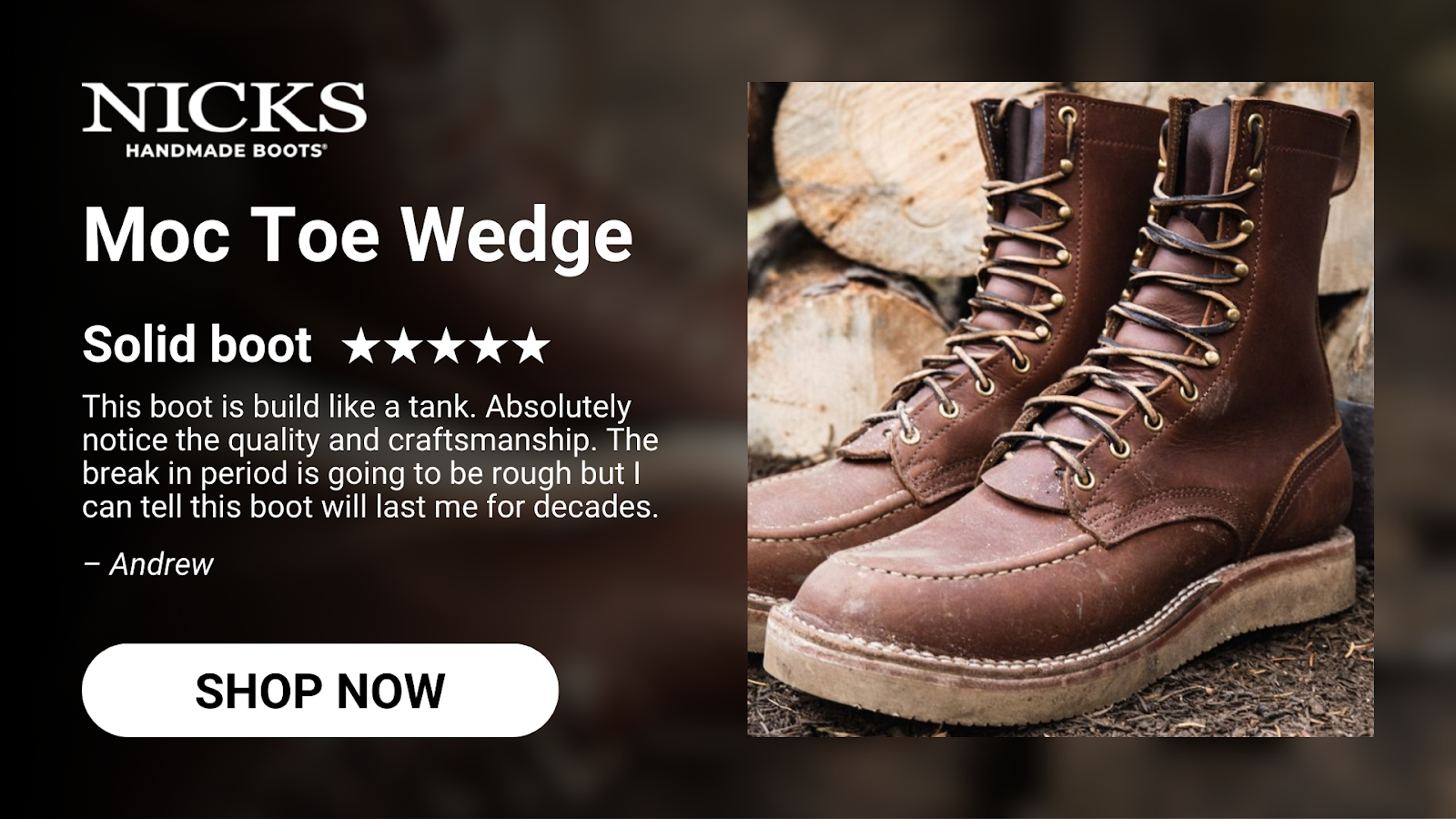

Final Thoughts
On the job, your boots are more than just footwear — they’re part of your safety gear, your comfort system, and your daily endurance strategy. Choosing a composite toe boot means you're prioritizing safety without adding extra weight, temperature discomfort, or unnecessary metal.
Whether you work in construction, manufacturing, electrical, or logistics, the right boot makes all the difference. From preventing injuries to supporting your posture over long shifts, investing in high-quality, full grain leather boots like those from Nicks Boots ensures long-term durability, comfort, and peace of mind.
And when every step counts, it’s worth stepping into something made to last.
Read also:
Frequently Asked Questions About Composite Toe Boots
Are composite toe boots OSHA approved?
Yes, composite toe boots can be OSHA approved if they meet ASTM F2413 safety standards. Always check the label or product description to confirm compliance.
Do composite toe boots break in faster than steel toe boots?
Generally, yes. Because composite toe boots are lighter and may allow for more flex in the toe box, they tend to feel broken in sooner — especially when paired with quality full grain leather uppers.
Are composite toe boots waterproof?
Not by default. Composite toe refers to the toe cap material only. Waterproofing depends on the boot’s construction and materials — such as sealed seams, treated leather, or waterproof membranes.
Can composite toe boots crack or shatter?
While highly durable, composite materials can become compromised if exposed to extreme impacts beyond tested limits. However, under normal conditions, they’re designed to absorb and disperse force safely without cracking.
Are composite toe boots better for airport or security work?
Yes. Because they contain no metal, they don’t set off metal detectors, making them ideal for frequent travel, secure facilities, or courthouse jobs.
What size should I choose in composite toe boots?
Composite toe boots may fit slightly differently due to the thicker toe cap. Some people go up a half size for extra toe room, but fit will vary by brand and boot design — always consult the manufacturer's sizing guide.
Do composite toe boots work well for warehouse jobs?
Absolutely. They offer the needed toe protection without the weight of steel, which is perfect for fast-paced, mobile work in warehousing and logistics.
How do I know when it’s time to replace my composite toe boots?
Signs include worn soles, decreased support, water damage, or visible cracks in the toe box. If the structural integrity of the boot is compromised, it’s time to replace them.
Can composite toe boots be resoled?
Yes — especially high-quality options like those from Nicks Boots. If the upper is still in good shape, resoling can extend the life of your boots significantly.
Do composite toe boots get softer over time?
Yes. While the toe cap itself remains rigid for protection, the surrounding leather and insole materials soften and conform to your foot with wear, especially when made from premium full grain leather.

